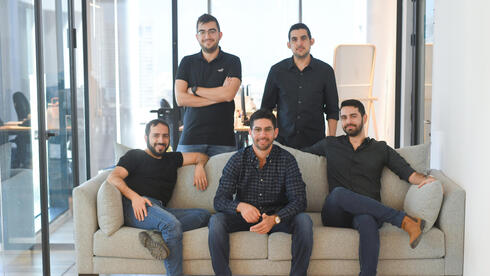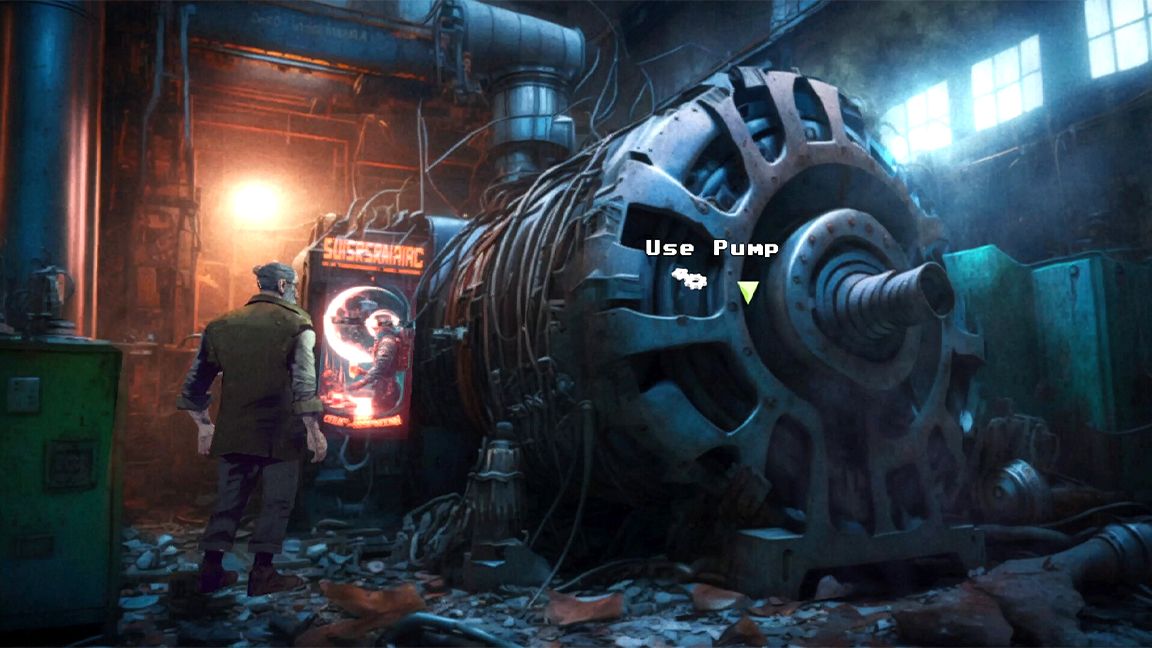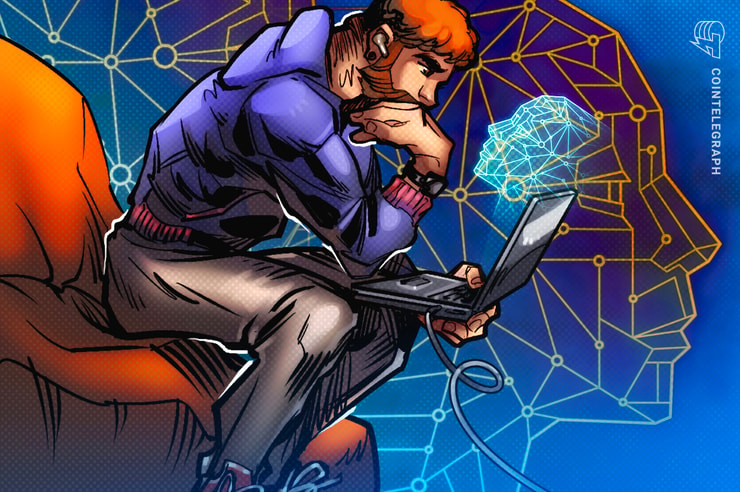- AIdeations
- Posts
- The Digital Deception Edition: Deepfakes, Better AI Communication, and AI's Takeover of Advertising
The Digital Deception Edition: Deepfakes, Better AI Communication, and AI's Takeover of Advertising
Exploring the Intricacies of AI Manipulation and the Future of Advertising
What's up ya'll, this is AIdeations. The go-to newsletter that takes AI and tech news that slaps and turns it into a no-bs, fun email for you each day. We dare you to find a more comprehensive Newsletter…….
Apple avoids all the AI hype entirely and doesn’t mention the word even once at WWDC. Yes, I think the futuristic ski goggles are awesome, yes I’ll likely buy it when it comes out, I just don’t like the 2-hour battery life. I’m leaving them out the newsletter minus one little snippet because well, I honestly hoped for so much better, especially in the realm of Siri. Apple will do what they usually do, wait a year and then claim to have done AI better than anyone and their momma. As always, reach to me here with questions, suggestions, and more. [email protected]
TL;DR
In this edition of Aideations, we discuss the geopolitical implications of AI, illustrated by a deepfake hoax involving President Putin. We share OpenAI's strategies for effective communication with AI, explore the growing influence of AI in advertising, including Coca-Cola and Stradivarius' AI-based designs, and the rising use of AI models. In our snippets, we cover AI's impacts on influencer marketing, game development, wages, and iOS updates. In research, we discuss ReWOO, a model that improves Large Language Models' efficiency. We also introduce various AI tools for daily tasks and offer free AI courses. Finally, we encourage leveraging ChatGPT for PowerPoint creation.
Here's what we've got in store for you today:
🥸 DeepFake Putin Causes Panic
♟️ OpenAI Releases Guide To Prompting
👙 How AI Models are Stitching Up the Advertising Scene
📰 News From The Front Lines
📚 Research Of The Day
🎥 Video Of The Day
🛠 Tools Of The Day
🤭 MEME Of The Day
🤌 Prompt Of The Day
Deepfake' Putin Declares War in High-Tech Hoax

MidJourney Prompt: Imagine a hyper-realistic deepfake of Vladimir Putin, Russia's president, appearing on a large, high-tech screen. He is declaring war, his expression stern and determined. The medium is photo hyper-realism, with a style that mirrors the stark realism of international news broadcasts. The lighting is harsh and direct, emphasizing the gravity of the situation. The colours are cold and muted, reflecting the seriousness of the declaration. The composition is a close-up shot, taken with a Canon EOS 5D Mark IV DSLR camera, EF 50mm f/1.8 STM lens, Resolution 30.4 megapixels, ISO sensitivity: 32,000, Shutter speed 8000 second. Putin's face fills the frame, with the ominous text of his declaration scrolling beneath him. --ar 16:9 --v 5.1 --style raw --q 2 --s 750
Alright, time for a reality check. Last weekend, in a high-tech sleight of hand, an AI-generated deepfake of Vladimir Putin popped up on screens across three regions in Russia. This 'faux-Putin' claimed Ukraine had stormed Russian territory and called for martial law, a nationwide mobilization, and urged people to flee. But guess what? It was all smoke and mirrors.
Fake "Putin's urgent appeal" was broadcast on radio and television in the border regions
With the voice of the bunker Fuhrer the hackers announced the martial law in Belgorod, Bryansk and Kursk regions, the general mobilization and evacuation deep into the Russian territory. The… twitter.com/i/web/status/1…
— NEXTA (@nexta_tv)
12:45 PM • Jun 5, 2023
Russian authorities confirmed this was the result of a sophisticated hack. The message played on radios and TVs in Belgorod, Rostov, and Voronezh. Putin's press secretary, Dmitry Peskov, cleared the air by declaring the message a sham and assured that services were back under control.
According to the Belgorod region's administrative center, the message wasn't just a hack, it was a "deepfake" - AI's latest stunt. This incident brings to the fore an important issue. In an age of escalating tech sophistication, even high-profile figures aren't immune to deepfake manipulation.
This AI prank comes at a tense time, as Ukraine is initiating a counteroffensive against Russia. Moscow claims to have warded off a major Ukrainian attack in Donetsk, but Ukraine labels this as misinformation. Interestingly, Ukraine has started shelling Belgorod, the same region that was targeted by the deepfake broadcast.
Ukraine is maintaining a stealthy approach to its counteroffensive. Its Ministry of Defense released a cryptic ad featuring soldiers signaling for silence, stating, "There will be no announcement about the start." Ukraine's Minister of Defense, Oleksii Reznikov, tweeted in the same vein, "Words are very unnecessary. They can only do harm."
"Words are very unnecessary
They can only do harm"(c) Depeche Mode
— Oleksii Reznikov (@oleksiireznikov)
2:43 PM • Jun 4, 2023
This deepfake incident is a wake-up call to the potential misuse of AI. It emphasizes the need for critical consumption of news and information. In this era, we must fact-check thoroughly and be aware that deepfakes can manipulate perception. As the lines blur between reality and digital trickery, let's not forget that seeing, or hearing, is no longer always believing.
You're Not Bad at AI, You're Just Bad at Prompting! Here's How to Fix It

MidJourney Prompt: color photo of a person looking at a computer screen A person sitting at their desk, their eyes locked onto their computer screen. Their brow furrowed in concentration as they read through lines of code, trying to make sense of it all. The glow of the monitor casting a warm light on their face. The environment is one of quiet focus, with the only sounds being the gentle hum of the computer and the occasional click of a mouse. The person is completely absorbed in their work, determined to solve the problem at hand. The mood is one of determination and perseverance, with a sense of satisfaction waiting just beyond the next hurdle. The person's posture is slightly hunched over, as they lean in closer to the screen, fully engrossed in their task. The photo is captured on a sleek, modern laptop, with the perfect combination of a MacBook Pro, Adobe Creative Cloud software, and a Wacom Intuos Pro tablet. The colors are crisp and clear, capturing every detail of the screen. Directed by the legendary Christopher Nolan, in collaboration with talented cinematographer Roger Deakins, visionary photographer Annie Leibovitz, and renowned tech designer Jony Ive, this scene is a true masterpiece. --c 10 --ar 16:9 --v 5.1
So, you've been tinkering with ChatGPT, and you're starting to think it's more like ChatGPT-can't. You've seen the reports on HackerNews, and you're wondering if the AI apocalypse is not just postponed but canceled altogether. Well, hold onto your keyboards, because we've got news for you: it's not the AI, it's you. Ouch! But don't worry, we're here to help.
OpenAI, in their infinite wisdom, have dropped a guide on the art of "prompting" - the secret sauce that 90% of users are missing. Yes, you heard it right. It's not about the model, it's about how you ask the question. So, let's dive into the six strategies that will turn your AI from dunce to genius.
1. Write Clear Instructions: This isn't a game of charades. You've got to tell the model exactly what you want. Instead of asking "Who's president?", try "Who was the president of Mexico in 2021, and how frequently are elections held?" See the difference? It's like asking for a coffee vs. a double-shot, half-caff, non-fat, no foam, extra hot latte.
2. Provide Reference Text: Imagine trying to answer a question about a book you've never read. That's what you're asking the model to do. So, give it some reading material! "Using the provided document, answer the following question: What is the main argument of the author?" Now we're talking!
3. Split Complex Tasks into Simpler Subtasks: You wouldn't eat a whole pizza in one bite, right? (If you would, we need to talk.) Break down your tasks. Instead of asking for a summary of War and Peace, ask for a summary of each chapter. The model will thank you, and so will your readers.
4. Give GPTs Time to "Think": We all need a moment to gather our thoughts. So does your model. Instead of asking "Is this math problem solved correctly?", try "First, solve this math problem yourself. Then, compare your solution to the given solution and determine if it's correct." Let it show off its math skills!
5. Use External Tools: Even AI can use a little help from its friends. If you're asking for a complex calculation, use a code execution tool to do the math, then ask the model to interpret the result. It's like having a calculator and a translator in one!
6. Test Changes Systematically: You wouldn't change your whole wardrobe based on one bad outfit, right? (Again, if you would, we need to talk.) Test your changes across a range of prompts to make sure they're really working.
So, there you have it. The secret to AI isn't in the code; it's in the conversation. Now, go forth and prompt like a pro! And remember, if all else fails, you can always blame the AI. Just kidding! Check out OpenAI's guide for a deep dive into the art of prompting. Trust us, it's worth the read.
Happy prompting!
Your friendly AI whisperer,
Brent
Code Couture: How AI Models are Stitching Up the Advertising Scene & Marketing Agencies Are DOA

MidJourney Prompt: Picture a stunning model, poised confidently on a massive billboard in the heart of Times Square. She's wearing a stylish, vibrant swimsuit that stands out against the backdrop of the city's hustle and bustle. The medium is photo hyper-realism, with a style reminiscent of high-end fashion photography. The lighting is a mix of the city's neon glow and the soft, natural daylight, creating a striking contrast. The colours are bold and saturated, reflecting the energy of Times Square. The composition is a wide-angle shot, taken with a Canon EOS 5D Mark IV DSLR camera, EF 50mm f/1.8 STM lens, Resolution 30.4 megapixels, ISO sensitivity: 32,000, Shutter speed 8000 second. The model is at the center of the frame, with the towering skyscrapers and bustling city life surrounding her. --ar 16:9 --v 5.1 --style raw --q 2 --s 750
Are you ready for the next roller coaster ride in the advertising world? The rumblings of an AI revolution are getting louder. Coca-Cola is inviting fans to play with their digital archives for AI-inspired designs, while fashion bigwig Stradivarius is trying to set Instagram ablaze with AI-based images. Yet, the real shockwaves may be felt in the creative dens of ad agencies. Picture this: one ad morphs to fit different websites. That's the magic of "contextual" advertising. However, as with any revolution, there are naysayers. Models and photographers are starting to feel like AI might just swipe left on their careers.
Take the case of French lingerie firm Undiz, who made a splash (quite literally) with their AI-generated underwater models. While the campaign was beautiful and dreamy, it caused an uproar among models and photographers. Even Levi's got tangled up in controversy over their partnership with Dutch studio Lalaland.ia, who promised diversity through AI models. The result? A promise to stick to working with real models and photographers. Not everyone is biting their nails though. Economist Olivier Bomsel shrugs it off as a "non-event," just a new form of digital editing.
But the plot thickens with the arrival of AI behemoths Meta and Google. They've just rolled out a range of simplified AI tools that can help anyone design ad campaigns. So, will these tools turn out to be shiny new playthings for ad agencies or the final blow to their business model? Only time will tell. In the meantime, fasten your seatbelts, because the world of advertising is in for a wild ride!
📰 News From The Front Lines: 📰
📚 RESEARCH 📚
The article discusses ReWOO (Reasoning WithOut Observation), a new approach to using Large Language Models (LLMs) proposed by a team of researchers. ReWOO separates the reasoning process of the LLM from external observations, reducing token consumption and improving efficiency. It divides the key components of an Augmented Language Model (ALM) into three separate modules: Planner, Worker, and Solver. This new approach has shown promising results in tests, improving accuracy and proving robust even when external tools fail.
Pros:
- Reduces token consumption, making the use of language models more cost-effective.
- Improves accuracy and efficiency of language models.
Potential Implications:
- This could lead to more widespread use of language models in various industries, as the cost and efficiency barriers are reduced.
- It could also open up new possibilities for how we use AI, as the models become more capable and versatile.
- This could potentially lead to the development of more effective and scalable Augmented Language Models.
📼 Video Of The Day 📼
🛠️ Tools Of The Day 🛠️
Slayer - No not the band, but here you create personalized podcasts in seconds.
QuestAI - Creating apps is as easy as drawing them on a napkin.
ChurningAI - Master the art of credit card point hacking with the help of AI.
PaceAI - AI assistant that helps you generate ideas 10x faster to increase productivity.
DPTH - Depth of field and 3D photo effect from single camera with AI magic
Poe - Chat with multiple LLMs including GPT4, Anthropic Claude, and more!
🤭 MEME Of The Day 🤭
Ok so this isn’t technically a meme, but this is exactly what transpired in just two months. The white house went from laughing, to okay, this is serious.

🤌 Prompt Of The Day 🤌
Create your next PowerPoint using ChatGPT. This prompt comes from one of the 100 newsletters I scour each day called Bagel Bots.
Create VBA code for a Powerpoint presentation about [topic]. I need [number] total slides, and the text should all be yours with no placeholder text.It will give you the VBA Code to install in powerpoint

Create VBA code for a Powerpoint presentation about How To Get Started Wholesaling Houses With Little To No Money. I need 12 total slides, and the text should all be yours with no placeholder text.
Open PowerPoint and create a blank presentation. Go to the menu bar and click Tools > Macro > Visual Basic Editor.
Once open, click the second button “Insert Module,” paste your VBA code, and click the Play (Run Macro) button on the menu.
Presto! Your PowerPoint has been created for you.

Now use Powerpoints AutoDesigner to spruce it up and what took an hour to create now took minutes!

Thanks for tuning in to our daily newsletter. We hope you found our tips and strategies for AI tools helpful.
Your referrals mean the world to us. See you tomorrow!
Interested in Advertising on AIdeations?
Fill out this survey and we will get back to you soon.
DISCLAIMER: None of this is financial advice. This newsletter is strictly educational and is not investment advice or a solicitation to buy or sell any assets or to make any financial decisions. Please be careful and do your own research.







